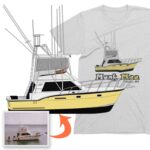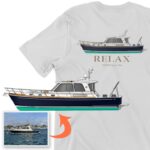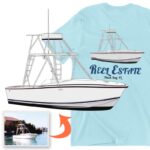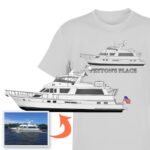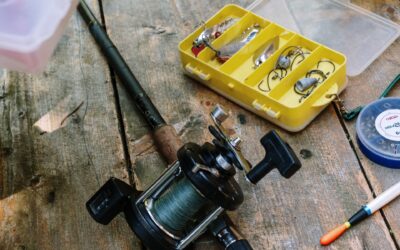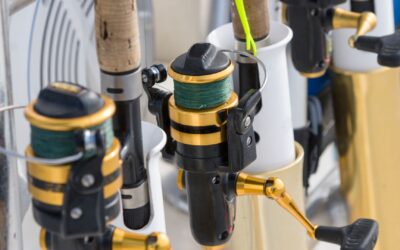No products in the cart
Inboard vs Outboard Engines: What’s better for your boat?
When a purchase is made through our links, we may earn a commission from Amazon, West Marine and other online businesses. You can learn about our content and affiliate policies on this page.
An Introduction to Inboard vs Outboard Engines
Getting out on the open waters is an amazing adventure connecting any boater with nature’s awe-inspiring effects.
But getting out there requires a power source!
Whether you are capturing the wind in a sailboat, slicing through calm lake waters in a pontoon boat, or powering through rough seas on a ship, the heart of your vessel is it’s power source.
In boats that don’t utilize wind power, your engine plays a critical role in your overall experience on the water defining a myriad of factors beyond just technical ones.
In the boating world, choosing between inboard and outboard engines depends on aligning your nautical style and preferences with your overall boating life.
Inboard and outboard engines both provide their own unique characteristics, advantages, limitations, and other considerations that boaters should know.
Mounted on the stern of a vessel, outboard engines provide both ease of use and versatility for boaters. They are favored for their easy accessibility to maintenance, as well as for their adaptability to a wide variety of boat styles and types.
Conversely, inboard engines mounted within the hull structure of boats provide durability and power, especially for larger vessels.
Offering a hidden component of the engine placement, inboard engines provide a sleek profile for boats that offers a classic nautical aesthetic.
But choosing between an inboard and outboard engine is far more than simply considering the engine placement within your boat.
The choice affects a boat’s performance, efficiency and reliability within your boating lifestyle.
No matter what type of recreational boater you are, understanding the differences between inboard vs outboard engines is the first step to maximizing your time and enjoyment of the water.
That’s why we’ve put together this overview on inboard vs outboard engines.
As we dive into the intricacies of these two popular nautical engine types, we hope that you find this information valuable for your nautical adventures!
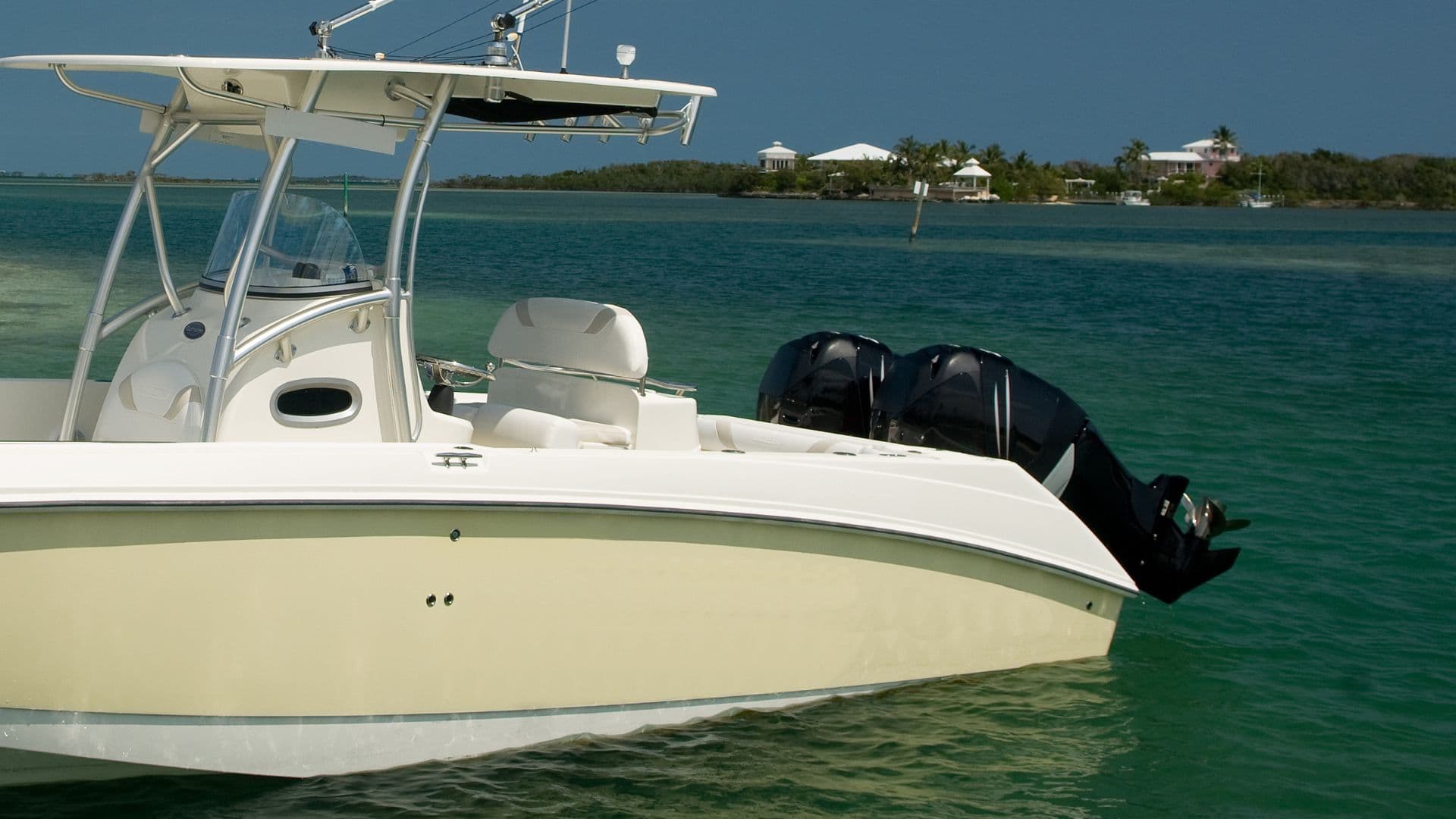
Understanding Outboard Engines
With their increased reliability in recent years, our first style of boat engine is easy to spot in local waterways.
Outboard engine boats offer a familiar site to anyone near the water with their engines mounted on the stern of a boat.
These adaptable and efficient engines provide boaters with self-contained marine propulsion that combines the engine, gearbox, and propeller into one easily portable unit.
Designed for easy mounting on the back stern or transom of boats, the adaptable nature of outboard engines makes them a natural and popular choice for boaters around the world.
The real appeal of the outboard engine lies in its modular construction, providing boaters with a completely self-contained unit to solve their power needs.
This unique configuration makes outboard engines especially attractive for smaller to medium-sized vessels, with modern design extending multiple outboards to applications for larger center console-style boats.
Some of the unique advantages of Outboard Engines include:
Ease of access for Maintenance and Repair
One of the most popular reasons for choosing an outboard engine vs inboard power comes down to the accessibility that outboard engines provide for maintenance and upkeep.
Unlike inboard engines, outboard engines provide super user-friendly access to all components of the marine propulsion unit.
Regular maintenance issues like oil changes, filter replacements, and other minor maintenance projects are easier to conduct in outboard engines, which helps to keep costs for maintenance down.
The easy access to outboard engines also allows more boat owners to manually service their engines personally without the use of an engine repair technician or advanced time in and out of the water at the marina.
Portability & Adaptability of the Outboard Engine
The next advantage of outboard engines is the portability that each outboard engine comes with by default.
Outboard engines provide benefits for boaters in two ways with respect to portability.
First, their ability to tilt, or lift, allows boaters to lift engines to protect props and lower units in shallow waters on the fly. This helps outboard engine-powered boats by getting them into shallower water, especially helpful for fishing adventures.
Next, the ability to more easily remove outboard engines allows for transportation for maintenance or repair.
Utilization of Space onboard nautical vessels
Since outboard engines are mounted on the back end of any boat, they help to free up valuable space within your boat’s construction and planning.
This provides boaters with more space for storage or amenities onboard.
This is especially helpful in smaller boats that can’t spare the extra space that an inboard engine requires for its mounting and setup within boats.
Some of the limitations of Outboard Engines include:
Weight distribution issues
Outboard engines aren’t exactly light.
And choosing the wrong configuration for your unique vessel can affect your boat’s balance on the water if not properly planned for in the boat’s construction.
In turn, this can affect your boat’s performance on the water, especially when the waters are rough and it is critical that your choice in engine power is carefully tailored to the bespoke setup of your unique boat.
Elemental Exposure
The next limitation of outboards is their exposure to the elements when compared with inboard engines.
This can lead to increased wear and tear, as well as visible weathering if not taken care of appropriately or maintained in a professional capacity.
Risk of Theft
The next limitation of outboard is the higher potential risk of theft.
Since outboards are exposed, they can be more easily taken, especially in lighterweight, lower horsepower models.
Noise & Vibration Levels
Since they are exposed, outboard engines are known for higher noise levels especially near the stern of the boat.
While modern outboard engines have reduced vibration in their modern construction methods, but any boater still has to consider the element of noise and vibration with any engine mounted in an exposed fashion on the stern of their boat.
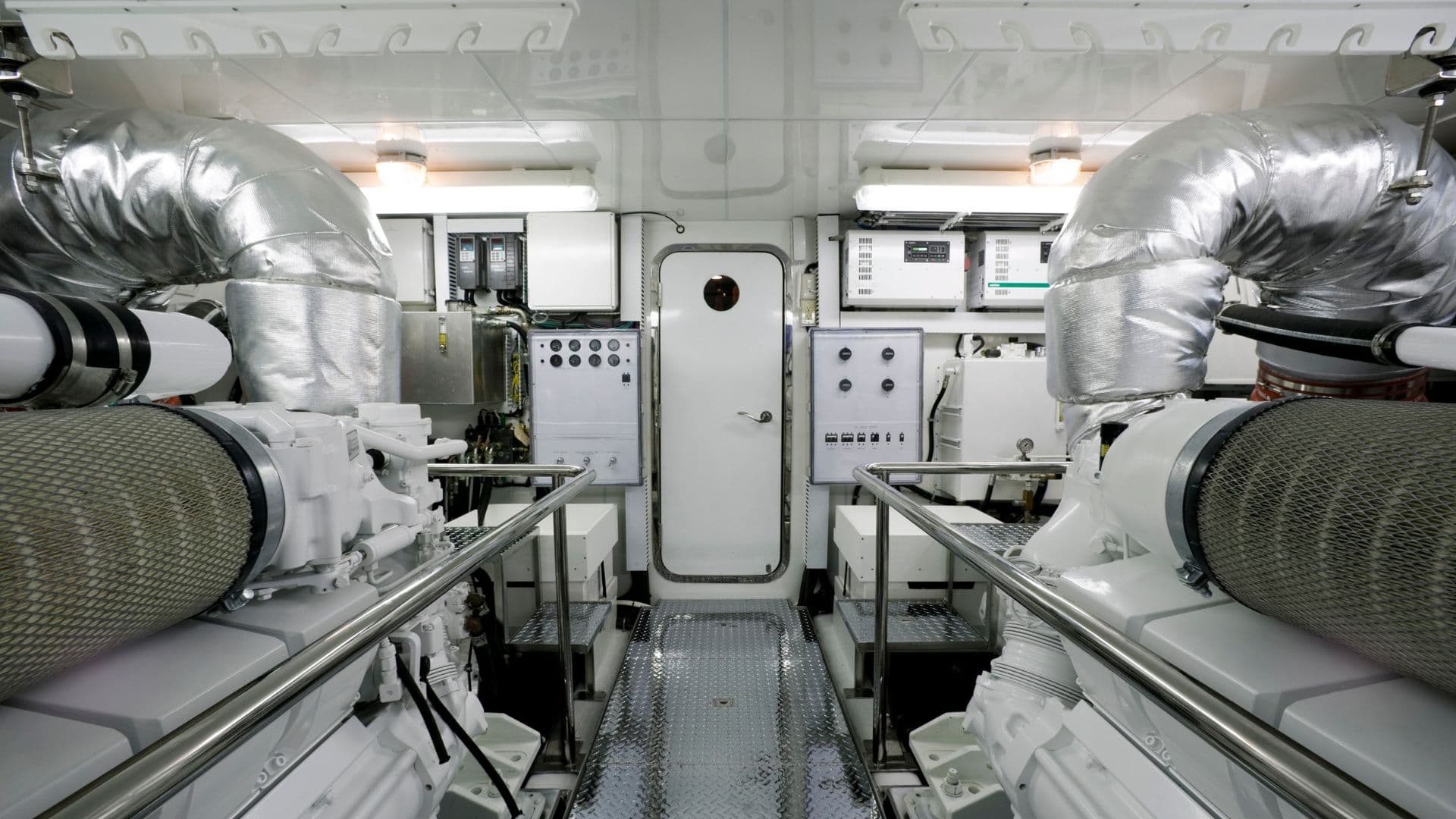
Understanding Inboard Engines
Known and recognized as the powerhouse of larger vessels, the inboard engine is designed and built into the marine vessel offering power and performance.
Inboard engines are integrated into dedicated engine room spaces on board vessels that accommodate these types of engines.
With an inboard engine, the boat’s drive shaft and propellor are exposed below the hull.
This setup creates a more complex transmission system that uses the engine’s power to thrust which moves the boat forward.
The fixed propellor and rudder system gives inboard engine setups more precise handling and a smooth, comfortable ride for boaters, among other features.
Some of the unique advantages of Inboard Engines include:
Greater Stability
One of the biggest advantages of inboard engines is the stability that they create onboard.
With mounting positions near the low center of the boat’s hull, the inboard engine helps to more evenly distribute weight onboard, which helps with performance and maneuverability.
The central setup of inboard engines helps for a smoother ride, especially in larger and heavier boats and yachts.
Greater Power & Efficiency
The next advantage of inboard engines is the powerful performance that they generate for larger open-ocean-going vessels.
This greater efficiency is especially important for boats that are going longer distances where fuel efficiency is especially important.
Noise Reduction
Since inboard engines are mounted in dedicated engine rooms, the engines produce much less noise and vibration when compared to outboard engines.
This creates a quieter yachting experience on bigger boats that allows for a more peaceful and relaxing boating style.
Aesthetics
With their internal mounting, inboard engines offer a cleaner and streamlined aesthetic that allows a boat’s unique design to flourish without engines coming into view.
Some of the limitations of Inboard Engines include:
Cost of Installation & Maintenance
Because of their size and mounting in dedicated spaces, inboard engines come with a significantly higher cost of maintenance and installation.
To compound the issue of cost, oftentimes engine rooms have limited access for maintenance which can make regular upkeep a lot more costly and time-consuming.
Repair Complexity
If your inboard engine has any problems the complexity of the solution is likely increased.
Between the difficulty in accessing the engines to the cost of parts and labor, servicing and fixing issues with inboard engines can be both complex and costly, something any owner should consider when choosing an engine type.
Space Requirements
An inboard engine setup can take up a lot of space on board your vessel.
The space needed for these engines can take the space of storage, amenities or living spaces onboard your boat, which can be a critical consideration in with such valuable real estate aboard any boat.
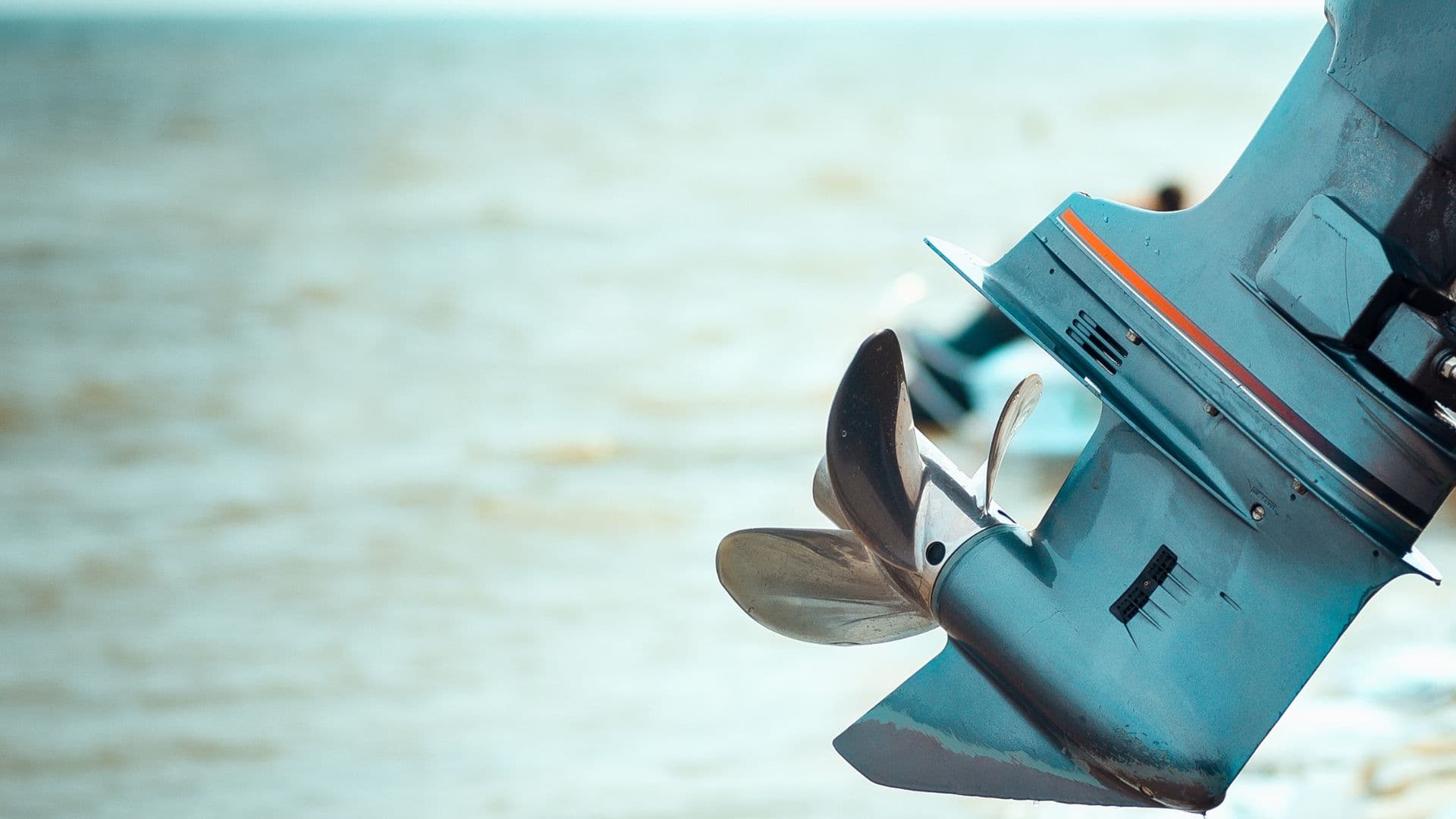
Comparing Inboard vs Outboard Engines
When choosing the right power for your boat, knowing the critical components of how inboard and outboard boats compare helps any boater make a better-informed decision for their unique boating life.
Both inboard and outboard engines provide distinct advantages and disadvantages that help to maximize the unique style of your boating life.
Three of the main components for boaters to consider when comparing inboard and outboard engines come down to performance, application, and cost differences between the two engine types.
Comparison on Performance
Outboard and inboard engines have completely different performance metrics when compared head to head.
Outboard engines are known for their quick acceleration and high top speeds. With modern engines coming a long way in recent years with respect to fuel efficiency, outboard engines have narrowed the gap in performance with their inboard counterparts.
Outboards are ideal for smaller boats and provide great performance and efficiency characteristics for vessels with a lighter overall weight.
On the other hand, inboard engines are known for their overall robust power outputs, which make them the ideal choice for larger vessels and open-ocean-going vessels.
Inboard engines provide higher horsepower that helps long-range voyagers with increased fuel efficiency for these longer trips.
One of the main decision points for inboard vs outboard engines comes down to the size of the vessel you are planning for, but taking into account the differences in efficiency between these engine types is a critical factor for any boater to consider.
Comparison on Application
If you’ve been on the water for any amount of time you know that one of the biggest considerations with respect to inboard vs outboard engines comes down to the boat in question that you will be powering or re-powering.
Inboard engines are ideal for larger boats and specialty watercraft like wakeboard boats that demand specific performance.
The lower center of gravity from the centrally mounted inboard engines provides greater stability and balance for vessels, which makes them a great choice for boats that need to handle longer voyages and rougher waters.
Conversely, outboard engines are the default choice for smaller boats, center consoles, dinghies and other smaller watercraft.
The versatility of outboard engines lends themselves to a wide range of setups and applications for smaller boats that need a shallower draft and better maneuverability.
At the end of the day, choosing the best power for your boat really starts and ends with the size and setup of the boat in question. While there is plenty of overlap in mid-size boats, smaller boats will usually have outboard power by default with the opposite being true for larger vessels.
Comparison on Cost
Boats have three main components to cost that include initial cost, maintenance and long-term expenses.
Generally, outboard engines have a lower overall cost due to their less complex installation and their modular and built-in components of drive shaft and propellor systems.
On the other hand, inboard engines generally are more expensive both upfront and in longer-term upkeep and maintenance costs.
While inboard engines may provide greater fuel efficiency over the long term, the reality is that maintenance and repair costs are usually much higher than outboard engines as engine room access is usually much tighter and specialized than their outboard counterparts.
As any boater can attest, a boat truly means to “Bring on another thousand”. Boat ownership is costly no matter how you break it down, and choosing the right power for your boat should definitely take into consideration the overall costs of your chosen power.

Choosing between Inboard vs Outboard Engines
Making an intelligent choice for your vessel’s marine propulsion involves a comprehensive examination of your boating style’s unique needs, preferences and desires.
Overall the best choice for your boat’s power isn’t just about what has the best power or performance but truly involves how you use your boat, where you use your boat and what you plan for your boating style moving forward.
Some of the most important considerations for choosing effective marine power for your unique boating needs include:
Performance and Handling
The first consideration for anyone looking to choose between inboard vs outboard engines comes down to unique demands related to handling and performance on the water.
Mounted on the stern of vessels, outboard engines offer great flexibility in terms of power and performance. Outboards are known in the boating world for their quick acceleration, quick throttle response and higher-end top speeds.
They also provide boaters with excellent on-the-go adjustments through trimming, which have an instant impact on a boat’s performance, fuel efficiency, and handling.
On the other hand, inboard engines with their centrally mounted locations, provide boaters with a greater degree of stability and balance on a watercraft while sacrificing a greater top speed and acceleration.
The increased stability can provide boaters with better handling, especially in choppy and rough waters, key for larger boats where stability is a key and critical component of overall enjoyment.
Weight & Spacing
Next up to consider when choosing between inboard vs outboard engines are the unique requirements of weight and spacing on your specific vessel.
Outboard engines by definition take up less space on board as they are easily mounted to the stern areas of a boat. This helps create space savings that can be extremely critical on smaller boats where space, storage and amenities are at a premium.
On the other hand, inboard engines require a much larger space for holding the engine and the engine room necessary to mount and store the dedicated engine space and weight.
This reduces available space in a watercraft, so planning for an inboard engine requires careful consideration for any boat.
Planned maintenance
As we have previously mentioned another big consideration is in planned maintenance and upkeep.
Since inboard vs outboard engines have very different demands for maintenance, it’s critical to plan how maintenance will be conducted on your new vessel.
Will you be doing the maintenance on your engines personally or hiring a skilled professional?
Do you have ample space in your proposed engine room to handle major repairs locally on your boat, or will you need dedicated storage and work space for engine repairs?
Since outboard engines provide much greater flexibility in access and maintenance, and inboard engines are the stark opposite, knowing how you plan to deal with your maintenance can make all the difference when choosing between inboard an outboard power.
Distances Travelled
The final consideration we have for boaters when choosing between inboard and outboard engines comes down to how your boat will be used in terms of how long you plan on taking trips.
Do you plan on using your boat for short day trips, fishing adventures, on-the-water parties and other weekend warrior-type activities?
Or do you plan on taking large voyages to far-flung harbors?
Since outboards are great for shorter distances and faster speeds with inboards being great for long voyages round the clock usage, knowing exactly how you intended to enjoy your vessel can make all the difference in identifying what’s best for your boating life.
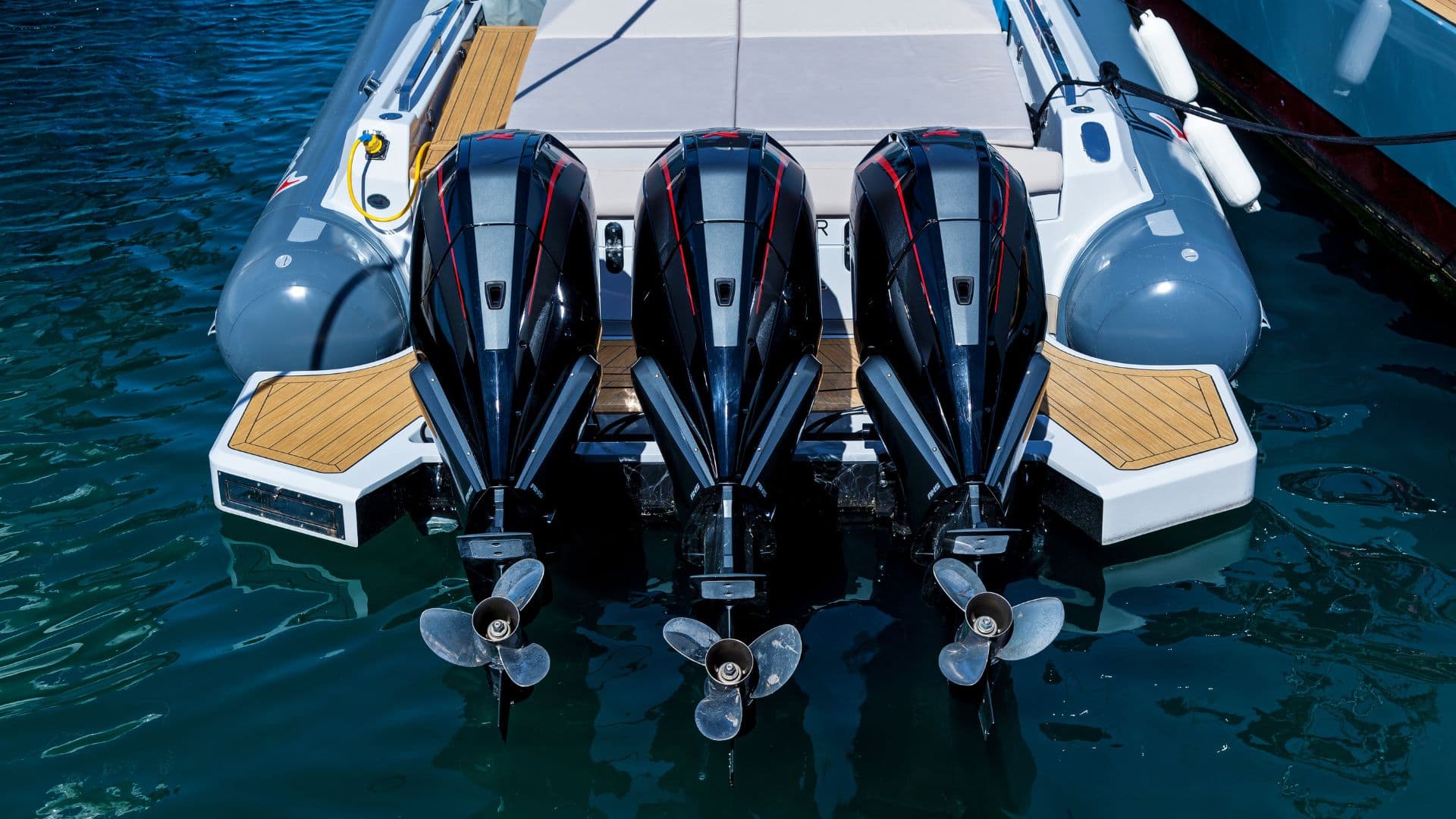
Maintenance Tips for Inboard and Outboard Engines
Proper maintenance is the keystone of ensuring the longevity and reliability of your boat’s engine, whether it’s an inboard or an outboard. Regular upkeep not only extends the life of your engine but also enhances safety, performance, and fuel efficiency. Here, we’ll explore essential maintenance routines for both inboard and outboard engines and highlight common issues to be vigilant about, helping you keep your vessel in prime condition for your aquatic adventures.
Basic Maintenance Routines for Inboard Engines
Regular Engine Checks: Conduct frequent inspections of the engine and its components, looking for any signs of wear, leaks, or corrosion. Pay special attention to the belts, hoses, and connections, replacing them as necessary to prevent failures.
Cooling System Maintenance: Inboard engines typically use a closed-loop cooling system. Regularly check the coolant level, and replace it according to the manufacturer’s recommendations. Inspect the impeller, a critical component of the cooling system, annually for wear or damage.
Oil Changes: Regular oil changes are crucial for the health of your inboard engine. Follow the manufacturer’s guidelines for oil change intervals, typically every 50 to 100 hours of operation, and always use the recommended oil type.
Exhaust System Inspection: Check the exhaust manifold and risers for signs of corrosion or blockages. Any compromise in the exhaust system can lead to engine overheating and potential damage.
Basic Maintenance Routines for Outboard Engines
Flush the Engine: After each use, especially in saltwater, flush the engine with fresh water to remove salt, dirt, and debris, which can lead to corrosion and cooling system blockages.
Inspect and Lubricate: Regularly inspect the propeller for nicks, dents, or entangled fishing line, which can affect performance. Lubricate moving parts, such as the throttle and shift linkages, to ensure smooth operation.
Fuel System Care: Use fresh, clean fuel, and add a fuel stabilizer if the boat will not be used for an extended period. Inspect fuel lines, primer bulbs, and connections for signs of wear or leaks.
Battery Maintenance: Ensure that the battery is securely mounted, the connections are clean and tight, and the battery is charged. Regularly check the battery’s electrolyte levels, if applicable.
Common Issues to Watch Out for in Each Engine Type
Inboard Engines:
- Overheating due to cooling system failures, such as a clogged heat exchanger or a faulty impeller.
- Oil leaks from seals and gaskets, which can lead to low oil levels and potential engine damage.
- Corrosion within the engine and exhaust system, particularly in saltwater environments.
Outboard Engines:
- Corrosion of external parts, especially in saltwater, which can compromise the engine’s integrity and performance.
- Fuel system issues, including clogged fuel filters or carburetors, often resulting from stale fuel or debris.
- Electrical problems, such as corroded connections or failed ignition systems, which can lead to starting issues or erratic engine performance.
Regular maintenance is the lifeline that keeps your boat’s engine running smoothly, ensuring that every departure from the dock leads to a safe and enjoyable return. By adhering to these essential maintenance routines and staying alert to common issues, you’ll not only safeguard your investment but also enhance your overall boating experience.

Inboard vs outboard engine FAQs
When considering between inboard and outboard engines for a new boat, potential boat owners often have a variety of questions. Here are some of the best FAQs to help guide the decision-making process:
1. What are the main differences between inboard and outboard engines?
Inboard engines are mounted inside the hull of the boat, typically midship, and power is transmitted to the water through a shaft that passes through the hull.
Outboard engines are mounted on the transom (back) of the boat and contain the engine, gearbox, and propeller in one portable unit.
2. How does the choice of engine affect the boat’s performance?
Outboard engines are known for their power and acceleration, making them ideal for speed and agility.
Inboard engines offer better balance and weight distribution, providing a smoother, more stable ride, especially in rough waters.
3. What are the maintenance considerations for inboard vs. outboard engines?
Outboard engines are generally easier to access for maintenance and repairs and can be completely removed if necessary.
Inboard engines, being enclosed, can be more challenging to access but are better protected from the elements, which can potentially extend their lifespan.
4. How does the engine choice impact the available space on the boat?
Outboard engines do not take up space within the boat’s hull, offering more interior space for storage or seating.
Inboard engines require space inside the boat but can contribute to a lower center of gravity and increased stability.
5. Are there significant cost differences between inboard and outboard engines?
Outboard engines can be less expensive initially and may cost less to maintain due to their ease of access.
Inboard engines often involve a higher initial investment and can be more costly to maintain, given the complexity of their installation and the potential need for professional service.
6. Which engine type is better for saltwater use?
Both engine types can be used in saltwater, but outboards are often preferred for their ease of flushing and maintenance, reducing saltwater corrosion risks.
Inboard engines can be used in saltwater environments but may require more diligent maintenance to prevent corrosion.
7. Can I upgrade or change the engine type on my boat later?
Switching from an inboard to an outboard engine (or vice versa) is typically not practical due to the significant structural differences and modifications required.
Upgrading within the same engine type (e.g., a more powerful outboard) is usually more feasible.
8. How does the engine choice impact fuel efficiency?
Fuel efficiency can vary widely based on the engine model, boat design, and operating conditions. Outboards are often perceived as more fuel-efficient due to their lighter weight and direct power delivery.
Inboard engines can also be fuel-efficient, especially in larger boats designed for cruising, where the engine’s efficiency is optimized for the hull design.
9. What are the environmental considerations for each engine type?
Modern outboard engines are designed to be environmentally friendly, with many models featuring four-stroke engines that reduce emissions and improve fuel efficiency.
Inboard engines, particularly newer models, also feature advanced technologies that minimize emissions and comply with environmental regulations.
10. How does the choice of engine influence the boat’s resale value?
The impact on resale value can depend on the boat type, market preferences, and the condition of the engine. Generally, boats with well-maintained, reliable engines—whether inboard or outboard—are likely to retain their value better.
When considering these FAQs, it’s essential to reflect on how each factor aligns with your specific needs, preferences, and boating lifestyle to make the most informed decision.
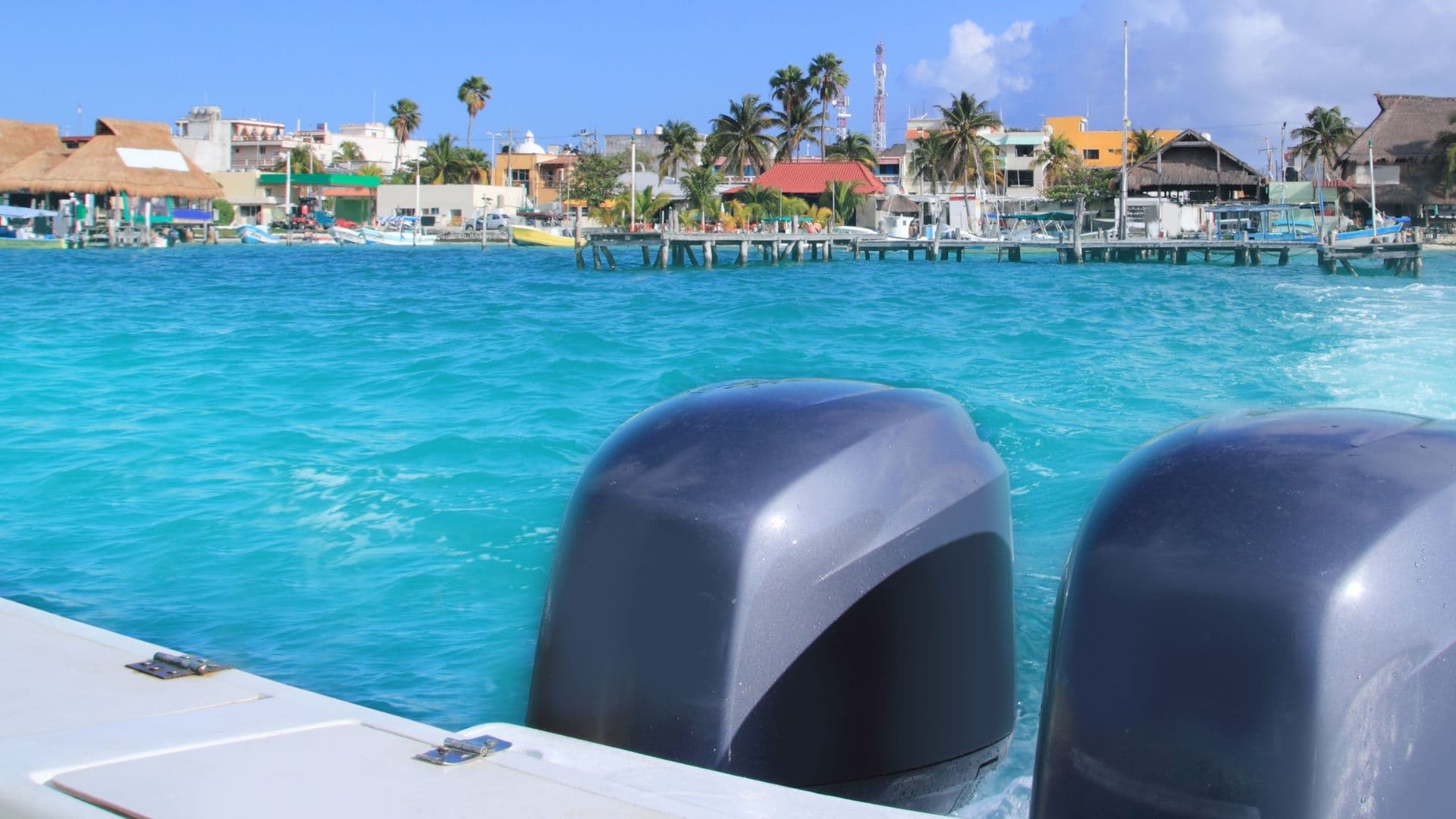
Final Thoughts on Inboard vs Outboard Engines
Navigating the waters of choosing between inboard and outboard engines for your boat is a voyage that requires careful consideration of numerous factors, from performance and maintenance to lifestyle and cost. Throughout this exploration, we’ve delved into the distinct characteristics, advantages, and challenges presented by each engine type, offering insights to guide you in making an informed decision that aligns with your boating aspirations.
Inboard engines, with their integrated design, offer enhanced stability, higher horsepower, and efficiency for larger vessels, alongside a quieter and more aesthetically pleasing boating experience. However, they come with higher installation and maintenance costs, complexity in repairs, and significant space requirements within the boat.
Outboard engines, on the other hand, stand out for their ease of maintenance, versatility, and better space utilization on smaller boats. They provide the freedom to navigate shallow waters and the convenience of portability. Yet, they may present challenges in terms of weight distribution, exposure to elements, and potentially higher noise and vibration levels compared to inboard engines.
The decision between inboard and outboard engines ultimately hinges on a balanced assessment of your specific boating needs, preferences, and intended use. Whether you’re drawn to the sleek integration and robust performance of inboard engines for luxurious cruising and lengthy voyages, or you value the flexibility, ease of maintenance, and agility of outboard engines for day trips, fishing, and watersports, understanding the nuances of each engine type is paramount.
Final thoughts on making this pivotal choice revolve around envisioning the type of boating experiences you seek. Consider the types of waters you’ll navigate, the activities you’ll engage in, and how you envision your time on the water. Factor in the initial and ongoing costs, maintenance requirements, and how each engine type fits into your lifestyle. Seeking advice from marine professionals, engaging with boating communities, and test-driving boats equipped with both types of engines can provide invaluable practical insights.
Ultimately, the choice between inboard and outboard engines is deeply personal, reflecting not just technical preferences but also your vision for your boating journey. By carefully weighing the characteristics, benefits, and limitations of each engine type, you can chart a course towards a boating experience that resonates with your spirit of adventure, ensuring countless memorable moments on the water.
—
Did you like this article? Did it help your search to find the perfect type of boat? Leave us a comment below and join the conversation!
Or have a look at some of our other marine guides including Gifts for Boat Owners, or informative posts like our Boat Grill Review, Anchor Chain Solutions, choosing the Best Fishing Hats, Selecting the Best Marine Stereo, or our guide to Haulover Inlet!
Do you own a boat? Turn your photo into custom boat artwork and gear!
For the boater who is proud of their sea-going vessel, custom boat gear is the perfect solution to show off their pride and joy anywhere.
At Custom Yacht Shirts, we use a photo of your boat to create custom boat art drawings that are perfect for use on a variety of customized gear.
We feature t-shirts, long sleeves, hoodies, tank tops, pop sockets, phone cases, and much more that make the perfect custom gift for any boat owner.
Best of all, once the art preparation process is complete, all of your custom boat gear is available for on-demand ordering on private Amazon.com product pages.
Order 1-1000 of your custom products easily and simply with your existing Amazon account featuring free returns and free shipping with a Prime account.
The perfect gifts for boat owners!
What are you waiting for???

Other Boating Resources
Gifts for Boaters: 22 Top Picks for Your Captain
Gifts for Boaters: 22 Top Picks for Your Captain When a purchase is made through our links, we may earn a commission from Amazon, West Marine and other online businesses. You can...
Best Braided Fishing Line: Unraveling the Top Picks for Anglers
Best Braided Fishing Line: Unraveling the Top Picks for Anglers When a purchase is made through our links, we may earn a commission from Amazon, West Marine and other online...
Types of Fishing Reels: The Angler’s Handbook
Types of Fishing Reels: The Angler's Handbook When a purchase is made through our links, we may earn a commission from Amazon, West Marine and other online businesses. You can...
Join our crew...
Boat
Gear
Simplified

Start your Custom Yacht Shirt order today!
Complete your order on our website to get your custom yacht gear started. Have our team convert a photograph of your yacht and stern art into digital art for use in your custom printing.

Shop for your Merchandise on our Website
Once you have approved your completed boat artwork, shop over 50 custom products in our custom boat gear store for the custom products that best fit your nautical lifestyle!

Get your yacht gear delivered to your dock on-demand!
Order your custom apparel again and again with no minimum orders or additional setup fees!

